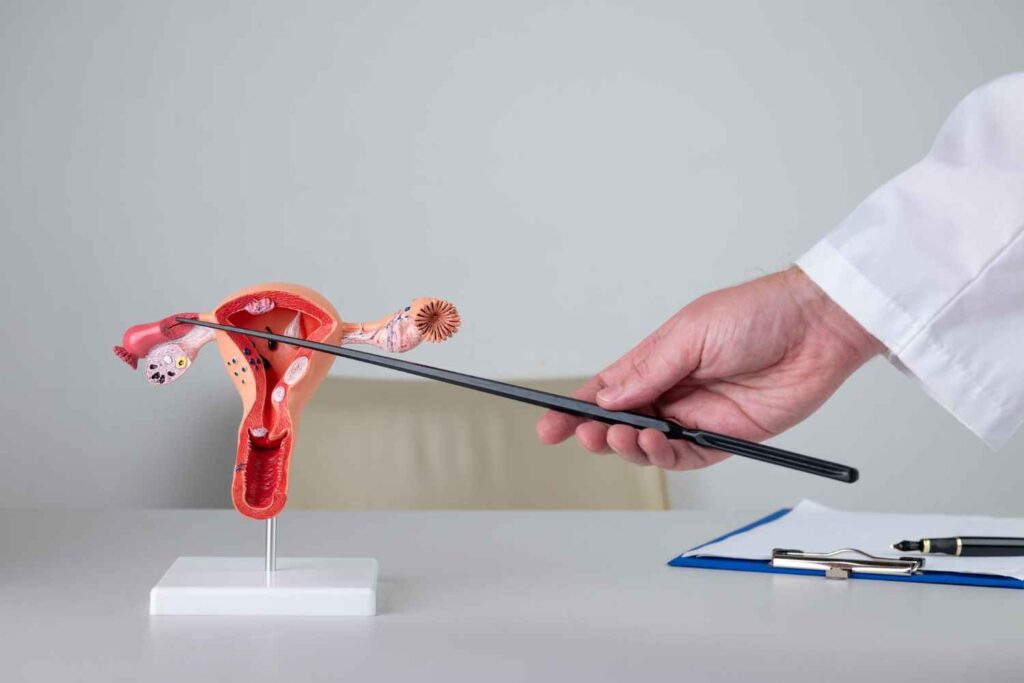Infertility is one of the most emotional challenges a couple can face. Thanks to In Vitro Fertilisation (IVF), millions of couples have been able to fulfil their dream of parenthood. However, IVF is not always successful on the first attempt. In fact, some couples undergo multiple failed IVF cycles despite having healthy embryos and a seemingly normal uterus.
One of the primary reasons behind these failures is implantation—a critical step where the embryo attaches to the uterine lining. If this step doesn’t happen at the right time, pregnancy cannot occur, even if everything else is perfect.
To solve this problem, scientists developed the ERA Test (Endometrial Receptivity Analysis). This cutting-edge test helps determine the exact timing when the uterus is most receptive to embryo implantation. By personalizing embryo transfer, the ERA Test can increase the chances of IVF success, especially for couples who have faced repeated failures.
In this detailed guide, we’ll explain:
- What the ERA Test is
- Why is it important
- Who should consider it
- How it is performed
- Benefits, limitations, and success rates
Let’s dive in.
What is the ERA Test?
The ERA Test (Endometrial Receptivity Analysis) is a molecular diagnostic test that examines the gene expression profile of the endometrium (the inner lining of the uterus). Its goal is to identify whether the uterus is receptive to an embryo at a given time.
How does it work?
- During IVF, embryo transfer usually takes place 5 days after progesterone administration or ovulation. This is considered the “standard implantation window.”
- However, not all women share the exact timing. Studies show that 20–30% of women have a “displaced window of implantation”, meaning their uterus is ready earlier or later than the standard timeline.
- The ERA Test identifies the personalized window of implantation (pWOI) by analyzing the activity of over 200 genes associated with endometrial receptivity.
In simple words, The ERA Test tells your doctor the exact time when your uterus is most likely to accept an embryo, making implantation more successful.
Why is the ERA Test Important in IVF?
IVF is a process with many delicate steps—egg retrieval, fertilization, embryo development, and finally, embryo transfer. Among all these, implantation is the step that often decides success or failure.
Common reasons for IVF failure include:
- Poor egg quality
- Embryo abnormalities
- Hormonal imbalances
- Uterine issues
- Mismatched timing of implantation
Even if embryos are genetically normal and the uterus looks healthy, implantation can still fail if the transfer is done too early or too late. The ERA Test helps synchronize embryo transfer with your body’s natural receptivity, thereby improving the chances of a successful pregnancy.
Who Should Consider the ERA Test?
Not everyone undergoing IVF requires the ERA Test. It is particularly beneficial for women and couples in certain situations:
1. Women with repeated IVF failures
If you’ve undergone two or more IVF cycles with good-quality embryos but failed to achieve pregnancy, the ERA Test can help determine if timing was the issue.
2. Couples with recurrent implantation failure (RIF)
This is defined as the failure of at least three good-quality embryo transfers to result in implantation. Many of these cases are related to displaced implantation windows, which ERA can detect.
3. Unexplained infertility
When all fertility tests are regular—ovulation is fine, the uterus is healthy, sperm quality is good, and embryos are normal—but pregnancy still does not occur, ERA may provide the missing piece of the puzzle.
4. History of uterine abnormalities
Women with a thin endometrium, scarring, or irregularities may benefit from ERA to better understand their receptivity.
On the other hand, first-time IVF patients generally do not need the ERA Test unless there are special indications.

How is the ERA Test Performed?
The ERA Test is done in a mock cycle (trial cycle) to replicate IVF preparation without actually transferring embryos.
Here’s the step-by-step process:
- Endometrial Preparation
- The uterus is prepared with estrogen and progesterone hormones just like in a real IVF cycle.
- Biopsy Collection
- A small sample of endometrial tissue is collected using a thin catheter.
- The procedure is quick, usually lasting 5–10 minutes.
- Some women may feel mild discomfort or cramping, but it is generally well-tolerated.
- Laboratory Testing
- The sample is analyzed using next-generation sequencing (NGS) to evaluate gene expression.
- More than 200 genes are examined to determine receptivity.
- Result & Report
- The result will categorize your endometrium as:
- Receptive – The uterus is ready for implantation.
- Pre-receptive – The uterus is not yet prepared.
- Post-receptive – The optimal window has passed.
- The result will categorize your endometrium as:
- Personalized Embryo Transfer (pET)
- Based on the results, your doctor will schedule embryo transfer in the next IVF cycle at the exact time your uterus is most receptive.
Benefits of the ERA Test
The ERA Test offers several significant benefits:
Personalized IVF Treatment – No more “one-size-fits-all” timing. Each patient gets a customized embryo transfer plan.
Higher Chances of Pregnancy – By transferring embryos when the uterus is most receptive, chances of implantation improve.
Reduces Repeated Failures – Helps couples who have suffered multiple failed IVF attempts.
Scientific Precision – Uses advanced molecular analysis rather than just visual examination.
Hope for Difficult Cases – Especially helpful for women with recurrent implantation failure.
Limitations of the ERA Test
While the ERA Test has many advantages, it also has limitations:
- Not Necessary for Everyone – Most first-time IVF patients can achieve success without the use of ERA.
- Cost Factor – It can be expensive, and not all insurance plans cover it.
- Requires Extra Cycle – Since it needs a mock cycle, treatment may take longer.
- Mixed Evidence – Some studies suggest that ERA significantly improves pregnancy rates, while others argue that the benefits may be limited to specific groups.
ERA Test vs. Traditional IVF Timing
| Aspect | Traditional IVF Timing | ERA Test-based Timing |
| Embryo Transfer Day | Standard (e.g., Day 5 post-progesterone) | Personalized (based on genetic test results) |
| Assumption | All women have the same window of implantation | Recognizes individual differences |
| Success Rate | May fail in women with displaced windows | Increased implantation chances |
| IVF Approach | Standardized | Personalized |
Success Rates with ERA Test
- For patients with recurrent implantation failure, studies show that ERA-guided embryo transfer improves pregnancy rates by 15–20% compared to standard timing.
- For first-time IVF patients, the improvement is less clear, which is why ERA is usually recommended only for those with repeated failures.

Frequently Asked Questions (FAQs)
1. Is the ERA Test painful?
The biopsy may cause mild cramping, similar to period pain, but it is quick and usually well-tolerated.
2. How much does the ERA Test cost?
The cost varies depending on the clinic and country. In India, it typically ranges between ₹30,000 and ₹50,000.
3. Does the ERA Test guarantee IVF success?
No test can guarantee success, but ERA significantly improves the chances for patients with recurrent implantation failure.
4. Can the ERA Test be done during the same IVF cycle?
No, it is usually done in a mock cycle before the actual embryo transfer cycle.
5. Is an ERA Test needed for everyone?
No. It is mainly recommended for patients with repeated IVF failures, not for first-time patients.
Conclusion: Should You Consider the ERA Test?
The ERA Test (Endometrial Receptivity Analysis) represents a revolutionary advancement in personalized fertility care. It focuses on one of the most overlooked reasons for IVF failure—implantation timing mismatch.
For couples who have faced repeated IVF failures, recurrent implantation failure, or unexplained infertility, ERA can provide valuable insights and increase the chances of success. However, it may not be necessary for first-time IVF patients.
If you’re considering IVF or have already experienced failed cycles, discussing the ERA Test with your fertility specialist can help you make an informed decision. For many couples, ERA has been the key to finally achieving a long-awaited pregnancy.


